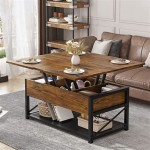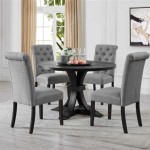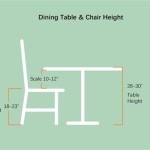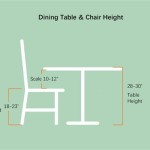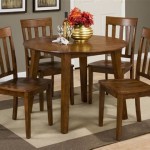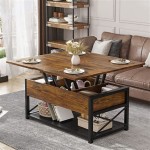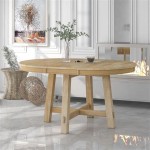Elevating Your Dining Experience: Choosing the Right Dining Table Runner and Placemats
Dining table runners and placemats are fundamental elements in table setting, serving a dual purpose of enhancing aesthetics and protecting the table surface. Their selection requires careful consideration of various factors including material, size, color, and design, ensuring cohesion with the overall dining room decor and suitability for the specific occasion.
The Functionality of Table Runners and Placemats
The primary function of a table runner is to add a decorative element to the table. It typically runs lengthwise down the center of the table, providing a visual anchor for centerpieces and other decorative accents. Beyond aesthetics, a table runner offers a degree of protection to the table surface against spills, scratches, and heat. It can also muffle sound, creating a quieter dining environment. Placemats, on the other hand, are designed to protect individual place settings from similar hazards. They provide a designated space for each diner, preventing direct contact between dishes and the table. This is particularly useful in preventing staining from food and mitigating the impact of hot dishes on delicate table finishes. Furthermore, placemats contribute to a more organized and visually appealing table setting.
Using both table runners and placemats in conjunction creates a layered and sophisticated table arrangement. The runner establishes a continuous visual theme, while placemats define individual dining spaces. This combination offers maximum protection and allows for greater flexibility in styling.
Material Considerations for Durability and Aesthetics
The choice of material significantly impacts the durability, maintenance requirements, and overall aesthetic appeal of table runners and placemats. Common materials include cotton, linen, synthetic fabrics, and natural fibers. Each material offers distinct advantages and disadvantages.
Cotton is a popular choice due to its affordability, versatility, and ease of care. Cotton table runners and placemats are generally machine washable and available in a wide range of colors and patterns. However, cotton is prone to wrinkling and may require ironing to maintain a crisp appearance. It is also less stain-resistant than some other materials.
Linen is a natural fiber known for its elegant texture and durability. Linen table runners and placemats offer a sophisticated and timeless look. They are absorbent and resistant to stains, making them a practical choice for dining. However, linen is more expensive than cotton and requires more careful laundering to prevent shrinkage and maintain its shape. Ironing is often necessary to remove wrinkles.
Synthetic fabrics, such as polyester and vinyl, are highly durable, stain-resistant, and easy to clean. Table runners and placemats made from synthetic materials are ideal for everyday use and outdoor dining. They are available in a wide variety of colors and patterns, often mimicking the look of natural fibers. However, synthetic fabrics may not have the same aesthetic appeal as natural materials and can sometimes feel less luxurious.
Natural fibers, such as jute, bamboo, and seagrass, offer a rustic and organic aesthetic. Table runners and placemats made from these materials are durable and environmentally friendly. They are suitable for casual dining and add a touch of texture to the table setting. However, natural fiber table runners and placemats may be more difficult to clean and are not always stain-resistant. They may also shed fibers over time.
The selection of the appropriate material should align with the intended use and desired aesthetic. For formal dining, linen or high-quality cotton may be preferred. For everyday use and outdoor dining, synthetic fabrics or durable natural fibers may be more suitable.
Size and Shape: Achieving Proportionality and Functionality
The size and shape of table runners and placemats are crucial for achieving proportionality and functionality. The dimensions should complement the size and shape of the dining table and the individual place settings.
For table runners, the length should extend beyond the ends of the table, creating an overhang. The amount of overhang is a matter of personal preference, but a general guideline is to allow for 6 to 12 inches of overhang on each end. The width of the table runner should be proportionate to the width of the table, typically ranging from 12 to 18 inches. For narrow tables, a narrower runner may be more appropriate, while wider tables can accommodate a wider runner.
Placemats are typically rectangular or round in shape. Rectangular placemats are generally 12 to 14 inches wide and 16 to 20 inches long, providing ample space for a dinner plate, silverware, and a beverage glass. Round placemats typically have a diameter of 13 to 15 inches. The shape of the placemat should complement the shape of the dinnerware and the overall table setting. Square placemats are also available and can be used to create a more modern and geometric look.
When selecting the size and shape of table runners and placemats, it is important to consider the number of diners and the available space on the table. Ensure that there is sufficient room for each place setting without overcrowding the table. If the table is small, smaller placemats or a narrower table runner may be necessary.
In addition to standard sizes, custom-sized table runners and placemats can be created to fit specific table dimensions or design preferences. This allows for greater flexibility in styling and ensures a perfect fit.
Color and Design: Coordinating with the Dining Room Decor
The color and design of table runners and placemats should complement the overall dining room decor and create a cohesive aesthetic. The color palette should coordinate with the walls, furniture, and other decorative elements in the room. The design should reflect the style of the dining room, whether it is formal, casual, modern, or traditional.
Solid-colored table runners and placemats are a versatile choice that can be easily coordinated with a variety of dinnerware and table settings. Neutral colors, such as white, beige, gray, and black, are classic and timeless options that work well in any dining room. Bold colors, such as red, blue, and green, can add a pop of color and create a more vibrant atmosphere. When choosing a solid color, consider the overall color scheme of the dining room and select a color that complements the existing decor.
Patterned table runners and placemats can add visual interest and personality to the table setting. Common patterns include floral prints, geometric designs, stripes, and plaids. When choosing a patterned design, consider the scale of the pattern and the overall style of the dining room. Small-scale patterns are generally more versatile and can be used in a variety of settings. Large-scale patterns can make a bold statement but may be overwhelming in smaller dining rooms.
Seasonal table runners and placemats can be used to create a festive atmosphere for holidays and special occasions. Fall-themed table runners and placemats often feature warm colors and natural motifs, such as leaves, pumpkins, and gourds. Winter-themed table runners and placemats may incorporate snowflakes, reindeer, and other holiday-related designs. Spring-themed table runners and placemats typically feature pastel colors and floral prints. Summer-themed table runners and placemats may incorporate nautical themes, bright colors, and outdoor motifs.
The choice of color and design should reflect personal preferences and the desired atmosphere for the dining room. Experiment with different combinations to create a unique and stylish table setting.
Care and Maintenance: Ensuring Longevity and Appearance
Proper care and maintenance are essential for ensuring the longevity and appearance of table runners and placemats. The specific care instructions will vary depending on the material, but general guidelines include regular cleaning and proper storage.
For cotton and linen table runners and placemats, machine washing is generally recommended. Use a gentle cycle and cold water to prevent shrinkage and fading. Tumble dry on low heat or hang to dry. Iron while slightly damp to remove wrinkles. Avoid using bleach, as it can damage the fabric.
Synthetic table runners and placemats can typically be wiped clean with a damp cloth. For tougher stains, use mild soap and water. Avoid using abrasive cleaners, as they can scratch the surface. Machine washing may be possible, but always check the manufacturer's instructions.
Natural fiber table runners and placemats may require spot cleaning or professional cleaning. Vacuum regularly to remove dust and debris. Avoid getting them wet, as this can cause damage. Store in a dry place to prevent mildew.
Regardless of the material, it is important to address spills and stains promptly to prevent them from setting. Blot spills with a clean cloth and avoid rubbing, as this can spread the stain. Pre-treat stains before washing, following the manufacturer's instructions.
Proper storage is also important for maintaining the appearance of table runners and placemats. Store them flat or rolled to prevent wrinkles. Avoid storing them in direct sunlight, as this can cause fading. If possible, store them in a breathable bag or container to protect them from dust and moisture.
By following these care and maintenance guidelines, table runners and placemats can maintain their beauty and functionality for years to come.
Evaahome Table Runner Pvc European Style Mat 33x91cm Non Slip Coffee Dining Home Decoration Long Towel Tv Cabinet Cover

A Quick Guide To Using Placemats And Table Runners Cv Linens

Table Runners Vs Placemats Which Should You Use Society6

Burlap Cotton Fringe Placemats For Dining Table Decor Farmhouse Heat Resistant Place Mats

5 Ways To Decorate A Table With Runner Pottery Barn

Table Runner Or Placemats Differences How To Overlap Suggestions Tablecoversnow Com

Enhance Your Setting How To Decorate With A Table Runner Cv Linens

Hokipo Pvc Placemats With Table Runner For Dining 4 Seater Ar2957 At Best S In India Jio

Table Linen And Napery Tablecloths Runners Placemats Napkins Tea Towels

Tablecloths Table Runners Placemats Adairs

